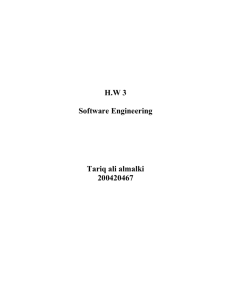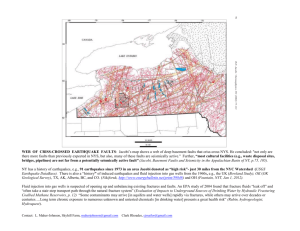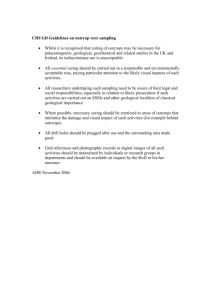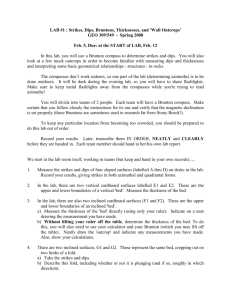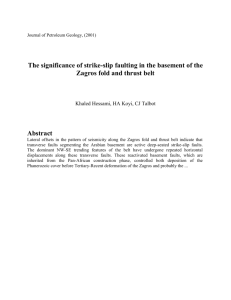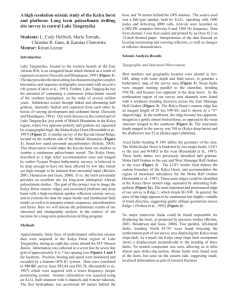Flamborough Chalk Outcrops
advertisement
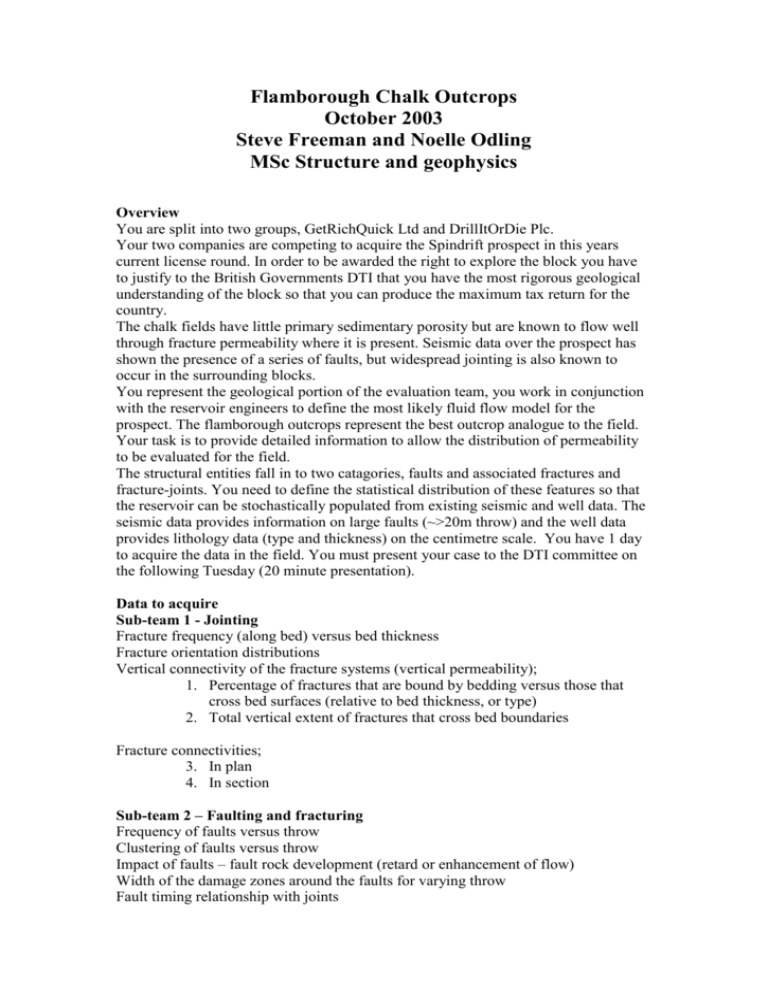
Flamborough Chalk Outcrops October 2003 Steve Freeman and Noelle Odling MSc Structure and geophysics Overview You are split into two groups, GetRichQuick Ltd and DrillItOrDie Plc. Your two companies are competing to acquire the Spindrift prospect in this years current license round. In order to be awarded the right to explore the block you have to justify to the British Governments DTI that you have the most rigorous geological understanding of the block so that you can produce the maximum tax return for the country. The chalk fields have little primary sedimentary porosity but are known to flow well through fracture permeability where it is present. Seismic data over the prospect has shown the presence of a series of faults, but widespread jointing is also known to occur in the surrounding blocks. You represent the geological portion of the evaluation team, you work in conjunction with the reservoir engineers to define the most likely fluid flow model for the prospect. The flamborough outcrops represent the best outcrop analogue to the field. Your task is to provide detailed information to allow the distribution of permeability to be evaluated for the field. The structural entities fall in to two catagories, faults and associated fractures and fracture-joints. You need to define the statistical distribution of these features so that the reservoir can be stochastically populated from existing seismic and well data. The seismic data provides information on large faults (~>20m throw) and the well data provides lithology data (type and thickness) on the centimetre scale. You have 1 day to acquire the data in the field. You must present your case to the DTI committee on the following Tuesday (20 minute presentation). Data to acquire Sub-team 1 - Jointing Fracture frequency (along bed) versus bed thickness Fracture orientation distributions Vertical connectivity of the fracture systems (vertical permeability); 1. Percentage of fractures that are bound by bedding versus those that cross bed surfaces (relative to bed thickness, or type) 2. Total vertical extent of fractures that cross bed boundaries Fracture connectivities; 3. In plan 4. In section Sub-team 2 – Faulting and fracturing Frequency of faults versus throw Clustering of faults versus throw Impact of faults – fault rock development (retard or enhancement of flow) Width of the damage zones around the faults for varying throw Fault timing relationship with joints Morphology of the faults – stratigraphic controls Outcrops – South Landing & the Headland The majority of the day will be spent at South Landing that allows the most accessible outcrop. We will remain at the outcrop for ~3-4 hours. We will then briefly visit the headland outcrop that provides access to a seismic scale offset fault zone. Digital data Photos offer the possibility of very great resolution and accuracy and should be used in conjunction to field data collection. When you have limited field time photos allow data acquisition to occur back in the lab as long as you have references and scales to work off. You will have access to a digital camera and a Laptop to stitch panoramas back together if needed (can be time consuming). Make sure any photos you take have a scale in them and a known orientation. Timings You have very little time to acquire all of this data. You will need to manage your time carefully. We suggest that you split your group into two, one group focussing on the jointing and the other on the faulting. It may be worth rotating members through the groups through the day so that everyone has a chance to participate in all of the field components. Group Management Successful data acquisition and project completion requires very good group interaction. You will be evaluated on the whole geological evaluation not one single component, as such it will be worth constantly evaluating whether the group is achieving its global aims. Holding review meetings during the day should help keep the focus for the data collection. Safety Both sites are tidal areas, as such care needs to be taken. The areas also contain steep cliffs which can be unstable especially after its been raining. You will be provided with hard hats that should be worn when near any cliffs. The hard hats though will not stop 1 tonne blocks killing you if they fall on your head though, so please avoid any dangerous overhangs or areas that look like they may slide. What ever happens do not fool around on the outcrops. Stephen@rdr.leeds.ac.uk


